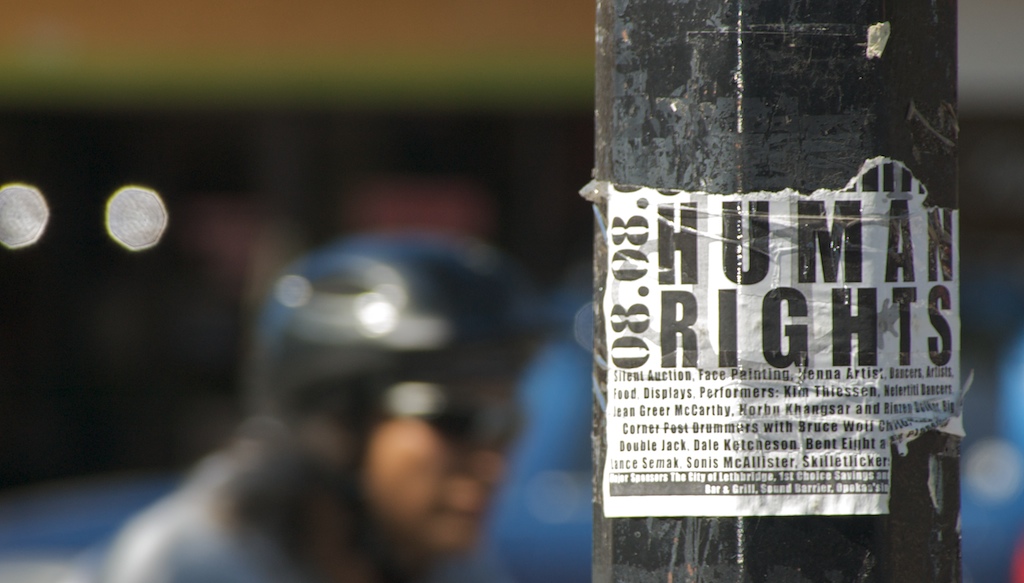Unlike the traditional concept of citizenship, digital citizenship is the audience in online communication. In the age of digitization, people interact more with the social and political environment through digital media. In other words, digital technology influences the identity and the form of digital citizenship. At the same time, digital citizenship is capable of self-creation and self-assertion through digital behavior (Hintz et al., 2018). However, in further realizing digital citizenship in a datafied society, the digital rights of citizens are also often compromised. For example, datafication can, to a certain extent, weaken citizen participation and thereby trigger the struggle between partial and complete democracy (Carpentier, 2007). Political and online regulatory issues can also impact citizens’ privacy and human rights (Karppinen, 2017). Therefore, as digital technologies continuously evolve, people must find a counterbalance between digital and human rights. Furthermore, in the following, I will discuss who the actual beneficiaries are when citizens’ digital rights are affected, whether it is platforms or governments.
Digital Rights for Who?

“Weibo.com Logo Chinese With Domain” by bfishadow is licensed under CC BY 2.0. (bfishadow, 2011)
Digital right is a concept extended from human rights in the context of the internet age (Booth, 2020). The introduction of digital technology has changed the way information is disseminated, the characteristics of the media, the business model, and so on, which also makes its development pose a challenge to rights (Goggin et al., 2017). If digital rights want to become a concept with legitimacy, the first thing that must be resolved is the subject of digital rights, meaning who are the enjoyers of digital rights. Digital rights are usually associated with digital citizenship, i.e., the user and the consumer. However, with the development of technology, the rise of digital platforms, and their expanding influence, these platforms have come to dominate the issue of digital rights. The decision to display content rests with the digital platforms themselves, who have the right to decide what content to display or restrict. For example, during the violent riots in China’s Xinjiang province in July 2009, Weibo, China’s version of Twitter, blocked all news about Xinjiang so that users could not discuss the events on the platform (Ng, 2013). The platform’s content censorship mechanism thus had a significant impact on citizens’ access to information and freedom of expression.
At the same time, the immediacy of digital platforms, as widely accessible sharing platforms, provides the basis for the rapid dissemination of specific information. The platforms allow for more effective trends through labeling choices and generate public opinion. Just a few months after the George Floyd incident, there were numerous live protests and riots (Aharon, 2022). In this instance, the social media platforms acted as disseminators of information, and digital citizenship can be seen as a receiver and secondary disseminator of the information, with digital platforms indirectly contributing to the subsequent protests through users.

“New Yorkers Applause Health Care Workers From Apartment Windows New York City COVID19 Quarantine” by Anthony Quintano is licensed under CC BY 2.0. (Quintano, 2020)
Sometimes digital platforms also use digital rights to cause unnecessary social opinion. It was also evident during the COVID-19 pandemic, where data showed that in the first half of 2020, Facebook and Twitter (X) received hundreds of posts about false treatments, anti-vaccine propaganda, etc., and that the social media giants did not take action on these misinformation-promoting posts (BBC, 2020). Therefore, it can be argued that platforms are abusing their power to drive traffic to themselves or for further commercial gain.
In addition, digital rights are enjoyed not only by digital platforms but also by government agencies. For example, the Australian Competition and Consumer Commission (ACCC), an independent government agency, conducts ongoing reviews of digital platforms through digital surveys (Klamka et al., 2022). Therefore, the government has absolute digital rights to regulate the digital marketplace; however, neither the digital platforms nor the government has more digital rights to realize digital citizenship in the true sense of the word, as they have adverse impacts such as over-interference and privacy issues, and this leads to the question of whether digital citizenship has digital rights today and the question of human rights in a data-driven society.
Digital Rights and Human Rights

“… Human Rights” by tao_zhyn is licensed under CC BY 2.0. (Schultz, 2008)
Ideally, the configuration of digital citizenship is composed of a datafied society through a favorable regulatory environment, secure infrastructure, adequate public knowledge, and the right to know and use the platform or application, which further enables the possibility of comprehensive self-determination (Hintz et al., 2018). In this idealized context, digital citizenship should have enjoyed more DIGITAL RIGHTS, but the opposite is true, as platforms empower citizens while limiting their rights. Firstly, there is the issue of digital citizenship’s privacy and security under corporate and government regulation. A survey showed that most respondents in Australia said their online privacy was beyond their control. Their concerns are centered on two aspects: the invasion of their private information by businesses on the one hand and the government on the other (Goggin et al., 2017). Every day, when people sign up or log in to certain websites, the privacy policy automatically pops up on the webpage where they have to click on the consent button to proceed, and this behavior also invisibly exerts control over the user’s personal data (TEDx, 2020).
Nowadays, the notion of privacy has been linked to factors such as age, gender, race, cultural background, and so on, which is a reason for the increasing marginalization of certain groups. One of the marginalized groups is seniors. For example, in China, against the backdrop of a deepening trend of aging, existing Internet products do not have the means to help older people cross the digital divide. As a member of digital citizenship, the digital rights enjoyed by seniors are far from those enjoyed by young people. The solution to this phenomenon is for Internet products to cross the cognitive gap.
In addition, participation is one of the issues raised by digital rights. Participatory media emphasizes the community involvement of users and a more democratized media environment. However, the fact is that citizens’ digital rights have been weakened in this participatory culture significantly. Arnstein divides participation into eight ladders, which include citizen control (Carpentier, 2007). I argue that it results from the platform’s control of content, such as those I have mentioned above about the disinformation that occurred during the COVID-19 pandemic (BBC, 2020). The decentralized nature of participatory media provides a quicker route for misinformation and disinformation to spread, and this leads citizens to participate unconsciously, losing their judgment and generating public opinion. Low algorithmic transparency is also one of the reasons for the erosion of citizens’ digital rights, which is similar to the principle of citizen control. It allows digital citizenship to be controlled by the platform, creating algorithmic bias and amplifying social prejudice. Naturally, individual rights can also address and innovate existing digital technologies and internet policies to a certain extent (Karppinen, 2017). To achieve this, greater transparency of algorithms, support for citizens’ right to freedom of expression, and greater digital inclusiveness are all essential. If the digital rights of digital citizens, which are their human rights, are advocated and protected. So that internet policy can be reshaped and user-centered digital ecosystems can be created.
The changes in digital transformation have created digital citizenship, which is gradually replacing citizenship in the traditional sense. However, in a datafied society, the citizen’s data is no longer private but bare and has become central to the development of capitalism. Citizens’ digital rights are greatly affected by the suppression of technology and government, and human rights are not under citizens’ self-control, which leads to citizens becoming the weaker party. In the future, people need to find a balance between platforms, governments, and citizens to enhance the citizens to protect and claim their rights in the digital world to realize the ideal configuration of digital citizenship (Hintz et al. 2018).
Navigating the Digital Landscape: Exploring Digital Citizenship and Digital Rights by Mingjing Yuan is licensed under CC BY-NC 4.0
Reference List
Aharon, G. (2022, July 21). The Impacts of Social Media Activism. Jejune Magazine. https://www.jejunemagazine.com/home/the-impacts-of-social-media-activism
BBC News. (2020, June 4). Social media firms fail to act on Covid-19 fake news. https://www.bbc.com/news/technology-52903680
Bfishadow. (2011). Weibo.com Logo Chinese With Domain [Photo]. Flickr. https://www.flickr.com/photos/61368956@N00/5812041415
Booth, E. (2020, November 18). Move Smart and Build Things: Defining Digital Rights for a Changing World. Council Magazine. https://councilmagazine.com.au/move-smart-and-build-things-defining-digital-rights-for-a-changing-world/
Carpentier, N. (2007). Theoretical Frameworks for Participatory Media. In N. Carpentier, P. Pruulmann-Vengerfeldt, K. Nordenstreng, M. Hartmann, P. Vihalemm, B. Cammaerts, & H. Nieminen (Eds.), Media Technologies and Democracy in an Enlarged Europe (pp. 105-122). Tartu University Press.
Goggin, G., Vromen, A., Weatherall, K., Martin, F., Webb, A., Sunman, L., & Bailo, F. (2017). Executive Summary. In Digital Rights in Australia (pp. 1-3).
Goggin, G., Vromen, A., Weatherall, K., Martin, F., Webb, A., Sunman, L., & Bailo, F. (2017). What are Digital Rights and Why Do They Matter Now?. In Digital Rights in Australia (pp. 5-11).
Hintz, A., Dencik, L., & Wahl-Jorgensen, K. (2018). Citizenship in a Digital Age. In. Digital Citizenship in a Datafied Society (pp. 20-41). Polity Press.
Hintz, A., Dencik, L., & Wahl-Jorgensen, K. (2018). Datafication and Surveillance. In Digital Citizenship in a Datafied Society (pp. 42-62). Polity Press.
Karppinen, K. (2017). Human Rights and the Digital. In H. Tumber & S. Waisbord (Eds.), The Routledge Companion to Media and Human Rights (1st ed., pp. 95-103). Routledge. https://doi.org/10.4324/9781315619835
Klamka, L., Low, A., Douglass, A., & Xu, M. (2022, November 25). Keep. Developments in Australia. Global Competition Review. https://globalcompetitionreview.com/guide/digital-markets-guide/second-edition/article/key-developments-in-australia
Ng, J. Q. (2013). Blocked on Weibo: What Gets Suppressed on China’s Version of. Twitter (and Why). New Press.
Quintano, A. (2020). New Yorkers Applause Health Care Workers From Apartment Windows New York City COVID19 Quarantine [Photo]. Flickr. https://www.flickr.com/photos/22882274@N04/49784722546
Schultz, J. (2008). … Human Rights [Photo]. Flickr. https://www.flickr.com/photos/7159212@N05/2767099314
TEDx Talks. (2020, January 17). Data Privacy and Consent. [Video]. Youtube. https://www.youtube.com/watch?v=2iPDpV8ojHA



Be the first to comment on "Navigating the Digital Landscape: Exploring Digital Citizenship and Digital Rights"